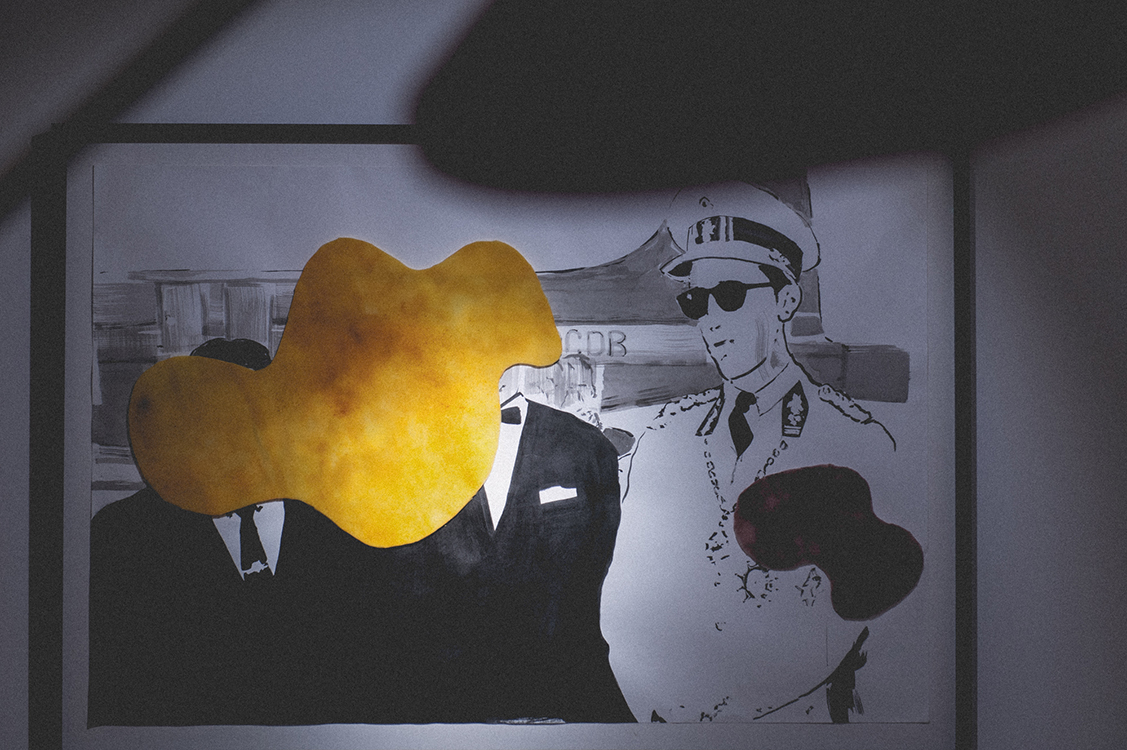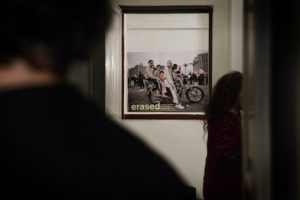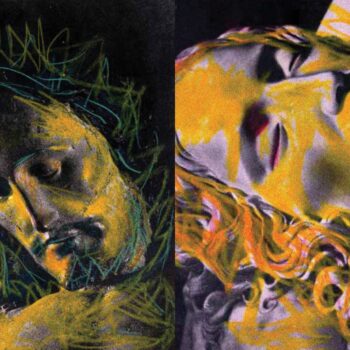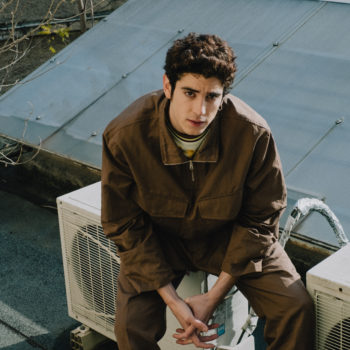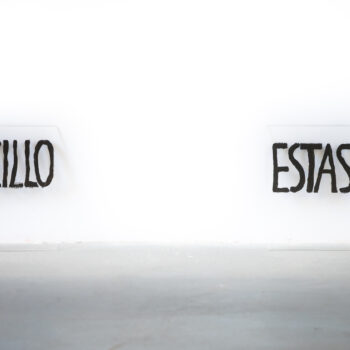by MARIA ROSSI
photography GABRIELLA CODASTEFANO
The title of the exhibition “From Cocoanut Grove to Soho Nights” by Ernesto Canovas and Gracjana Rejmer-Canovas triggers images of glamorous late-night parties and California beaches from a bygone era.
Ernesto and Gracjana, artists and partners in life, looked for sources as varied as old magazine advertisements and family holiday photos found in vintage shops in downtown New York to precisely evoke the golden age of Americana. We had a chat with them about their collaboration with one another for this joint exhibition, and with fashion designer Paul Smith, who hosted the show in his London boutique in Albemarle Street.
The story leading to this exhibition, which took place in a venue that is outside the usual art circuit, began at the Slade School of Art in London during the artists’ final graduation show in 2011, when they caught the eye of fashion designer Paul Smith, a noted art collector. That encounter eventually developed into an offer for the artists to use the designer’s boutique space for a solo show.
Ernesto and Gracjana had had the option of showing the paintings in a pristine white cube gallery but they chose instead to keep the original vintage furniture of the shop in place, since it contributed to the overall significance of their pieces.
The artworks conjured up images of old postcards, but Ernesto’s silhouettes in stark black brush strokes were unexpectedly overrun by Gracjana’s colorful interventions in cut and dyed foam. The effect was that of suddenly taking the viewer back to the present and re-establishing the distance with the painted subjects and their world. Indeed, the glamorous past represented by the Canovas was only outwardly simple and harmonious. If the idea of referencing the glamorous L.A.’s club Cocoanut Grove came from a fascination with its great history—from the celebration of the Oscars to the assassination of Robert Kennedy, in addition to being a hot spot for Hollywood celebrities for decades—there was also, in the paintings, a sense of the present impossibility of these “events that thereby exist only through an invention of narrative.”
On a final note, the artists told us that the occasion of working together brought out the complimentary qualities of their personalities which means we’ll be seeing more of the artists’ collaborative efforts in the future, although they will also continue to focus on their individual work paths.
“From Cocoanut Grove to Soho Nights” by Ernesto Canovas and Gracjana Rejmer-Canovas was hosted from November to December 2014 by Sir Paul Smith in his London boutique, located at 9, Albemarle Street, Mayfair-London.






